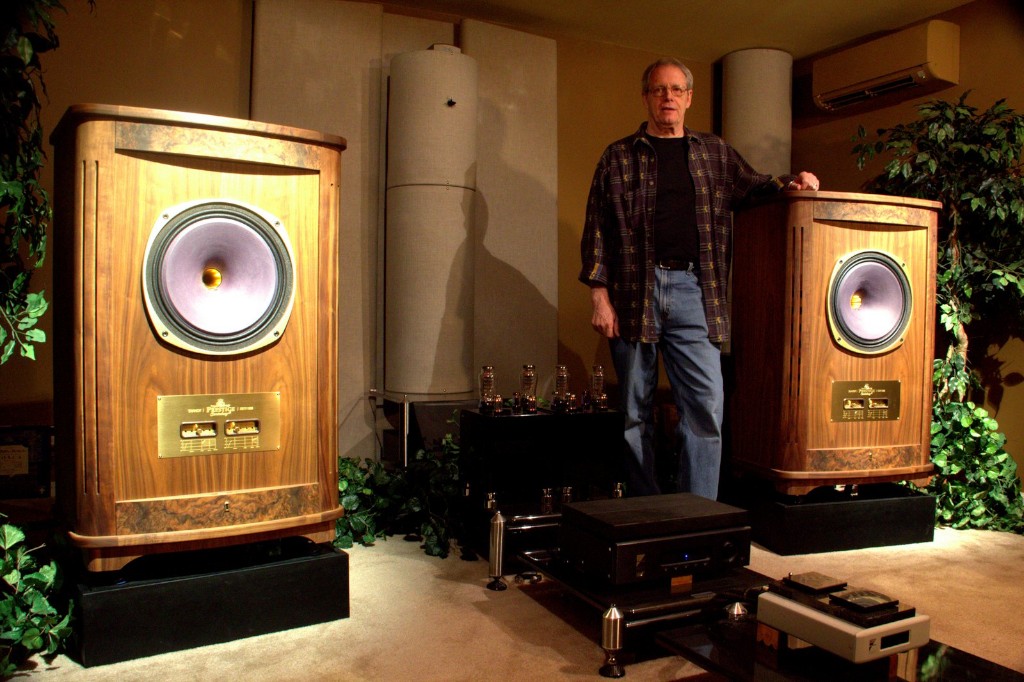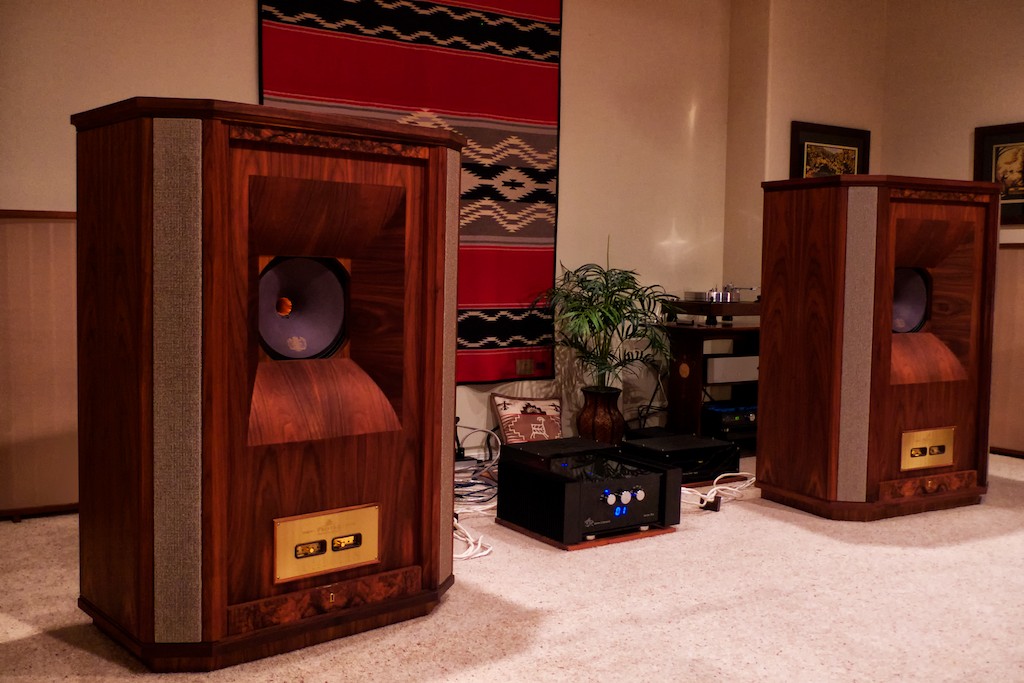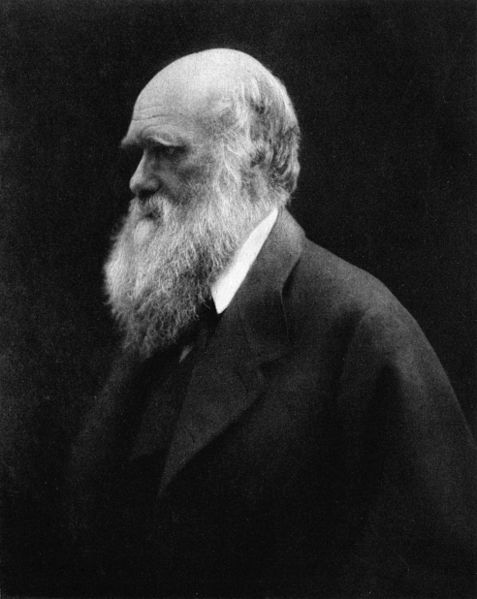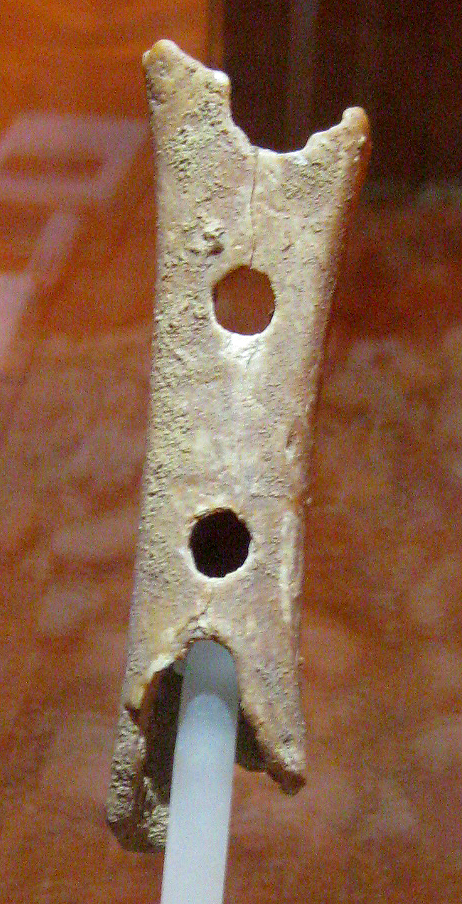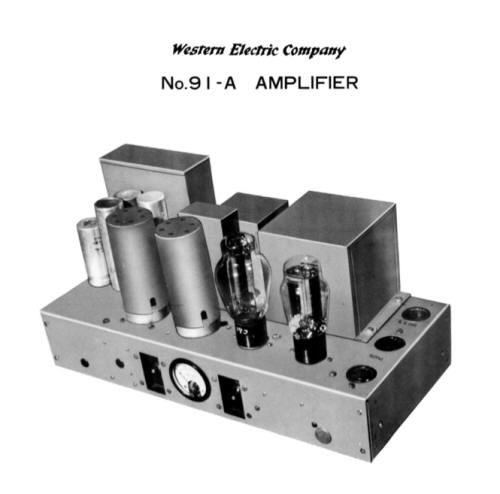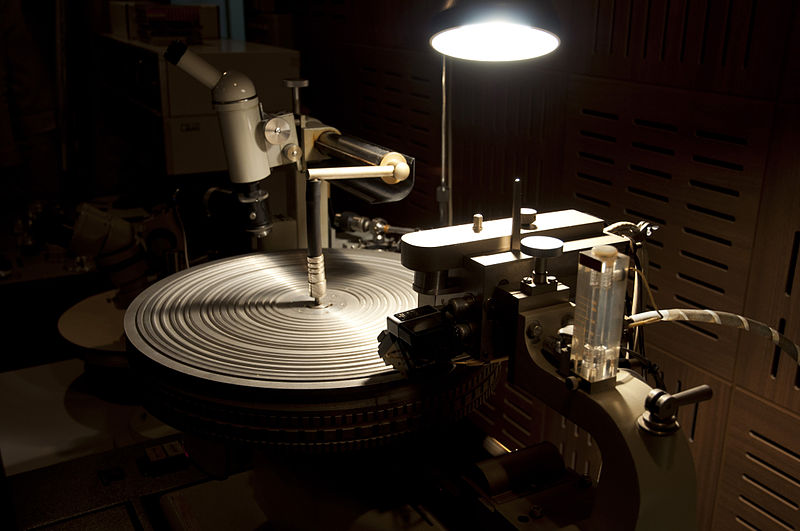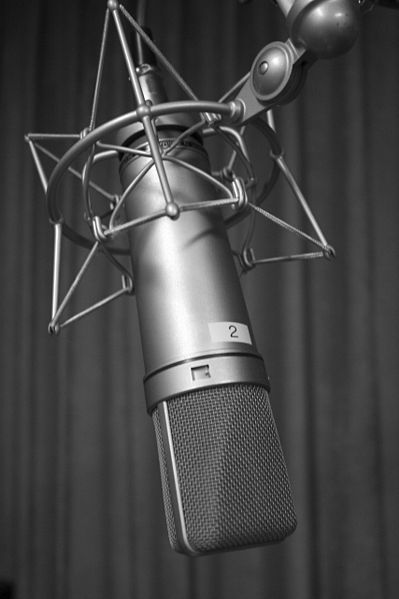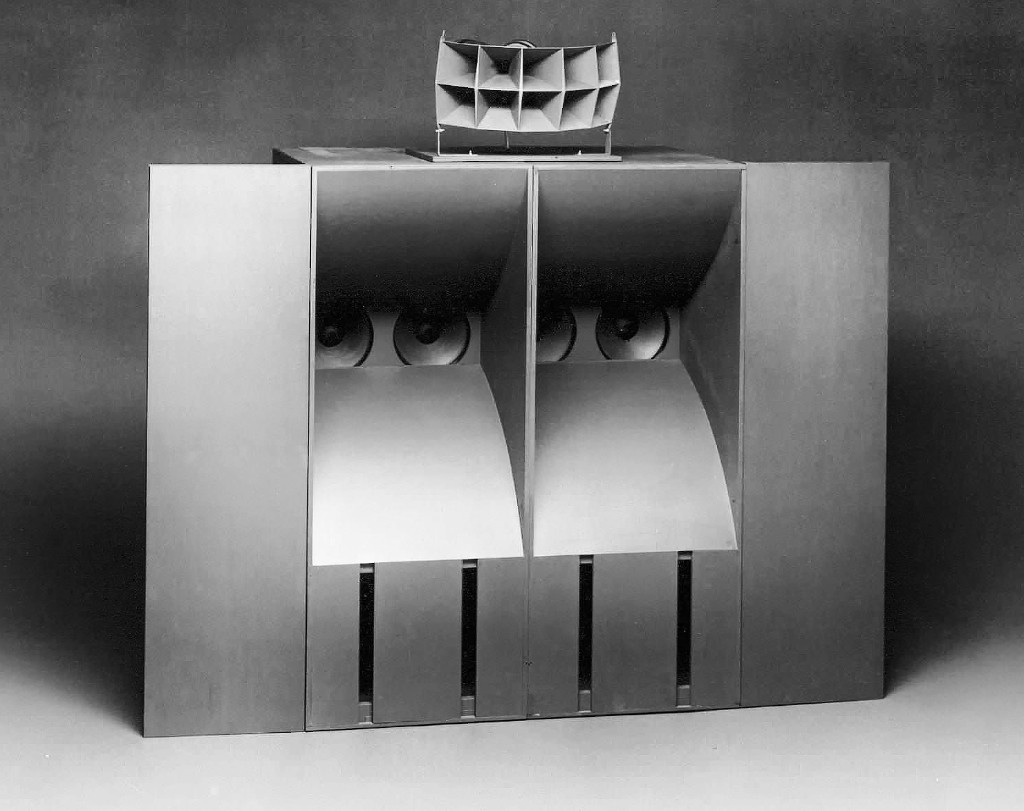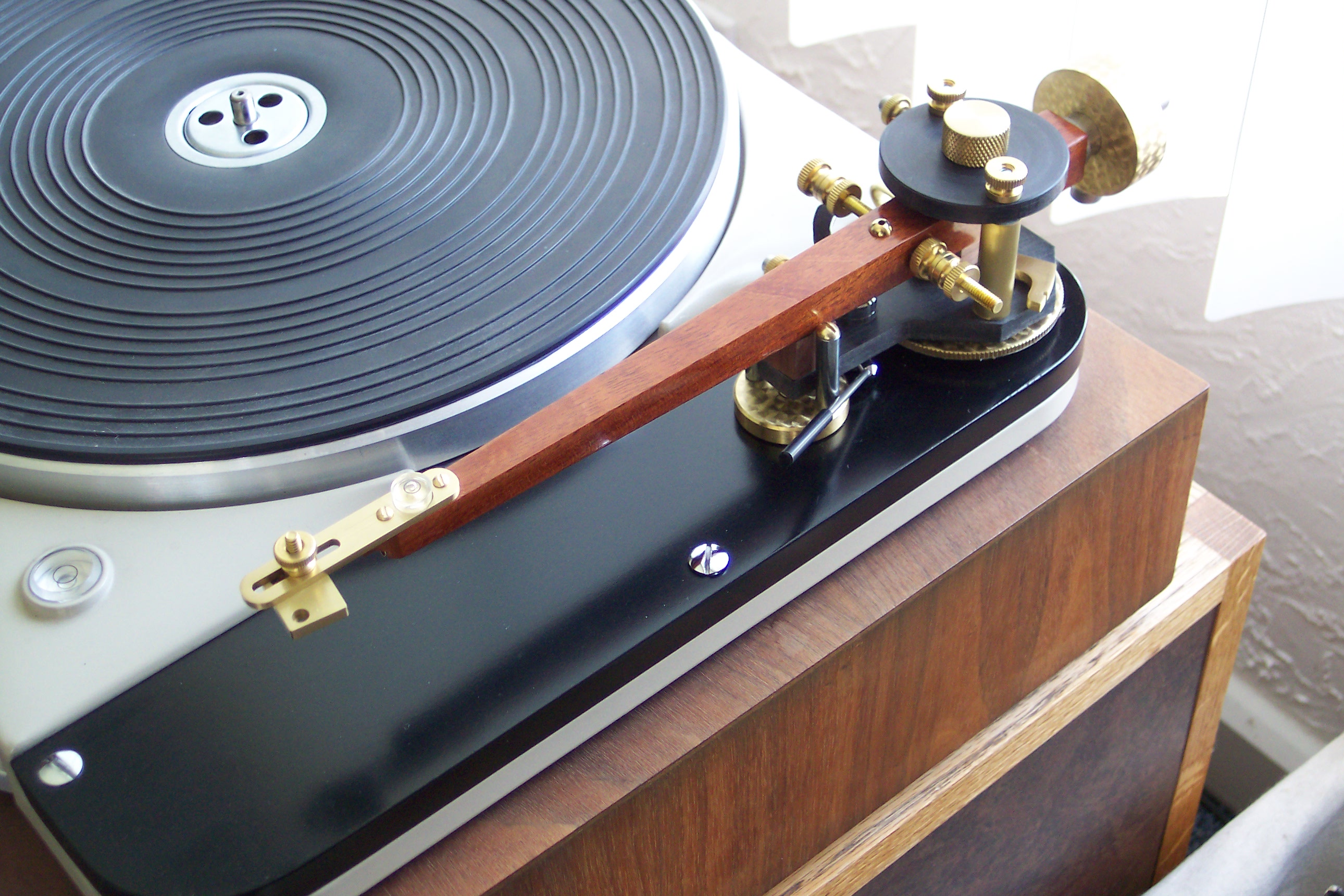If you read the post I made about Jim Smith's upcoming Through the Sound Barrier offerings that are intended to teach Hi-Fi enthusiasts and music lovers how to achieve maximum musicality from their Hi-Fi rigs, you know I couldn't be more excited. After all, the whole reason Jeff's Place exists is for that very reason - to help you connect to the music by making you aware of the most musically satisfying equipment out there, and how to get it set up and working its best in your home.
Those of you who have been reading my articles over the years for 6Moons, Positive Feedback Online, and here at Jeff’s Place, know I’ve put a lot of effort into trying to make Hi-Fi enthusiasts, manufacturers, and other Hi-Fi writers more aware of how to think about, evaluate, and articulate the performance of Hi-Fi gear in a way that's meaningful from a musicality perspective.
If I listen to a Hi-Fi system and what I notice first is the sonics - those things like transparency (being able to ‘see’ into the recording), soundstage (the three dimensions of the recorded space in width, height and depth), soundspace (the acoustic ‘space’ of the soundstage), and imaging (the feeling of solidity and localization of instruments & musicians on the soundstage) - I know there's something wrong with the system's musical balance.
If I listen to a Hi-Fi system and I come away thinking what an amazing musical experience it was, and how involved in the music I was, and then say, "It sounded great too!" almost in afterthought, then I know that system's going in the right direction.
Awareness of the influence of the sound barrier to musical satisfaction is growing rapidly right now among Hi-Fi enthusiasts, and momentum is swinging back in the direction of musicality, where music and Hi-Fi has its roots. (after all, Hi-Fi means having a high-fidelity to the music - not the sonics!)
This post is about the Big History of Musicality (a nod to David Christian's book Maps of Time), and how in terms of audio we're coming back to the fundamentals of music and emotional engagement in the audiophile world. It's exciting and it's beginning to happen now before our ears!
Let's back up for a moment and take a very high-level look at where we've come from to put things in perspective. (in the future I'll say more in depth about this)
At humanity’s dawn in prehistory when small hunter-gatherer groups were the norm, the human voice was presumed to be the first musical instrument. Charles Darwin (below) postulated in his work The Descent of Man that "The impassioned orator, bard, or musician, when with his varied tones and cadences he excites the strongest emotions in his hearers, little suspects that he uses the same means which his half-human ancestors long ago, aroused each other's ardent passions,during their court-ship and rivalry."
The human voice was eventually to be supplemented by the introduction of other musical instruments like drums and flutes, along with the musical elements of rhythm and melody. (Prehistoric flute from Divje Babe archeological site, photo from Wikimedia Commons)
Story telling was particularly important to the peoples of prehistoric and ancient times for education, cultural preservation, moral development, spiritual enlightenment, and entertainment. Singing is thought to have been an evolutionary development of story telling in prehistoric times, a pleasing aural way of holding the listeners’ attention while giving them a greater emotional connection to the story. The introduction of musical instruments is thought to have come a little later and may have been introduced as ways of supplementing the story-songs by mimicking other sounds in nature to create an even greater emotional connection for the listener.
As music evolved over prehistoric, ancient, Medieval, Renaissance, Classical, Romantic, and Modern eras, human beings developed a diverse palette of musical instruments and techniques with one purpose – to create a greater emotional connection for the listener to the music. Or as W.S.B Mathews put it in his book A Popular History of the Art of Music from the Earliest Times Until the Present, “Every manifestation of musical art has in it these two elements: The fit selection of tones; and, second, the use of them for expressing sentiment and feeling.” (you can get a free download of this book at Amazon.com)
During the prehistoric, ancient, Medieval, Renaissance, Classical, and the Romantic eras of human history, before the first recording technology existed (that would be Thomas Edison’s method in 1877), people listened to live music exclusively. When Thomas Edison introduced the recording and playback of the human voice to America in 1877 he set the stage to change the world of music. By 1915 Thomas Edison had developed a relatively sophisticated phonograph that was used for the playback of recorded music, and the pastime of listening to recorded music was born in America. (the photo below is of Edison and his phonograph)
Think about this for a moment: As I am writing this essay in January of 2013 the hobby of listening to recorded music is less than one hundred years old. My grandparents had an Edison phonograph, my parents - who were born only about ten years after the first demonstrations of Edison’s phonograph in 1915 - were quick to add listening to recorded music into their lives, and then not that many years later I did too. A lot of advancement has occurred in the realm of music recording and playback in the last century and it continues to develop at a rapid pace.
It’s funny you know, but the musicality (the quality of being musical or melodious) of those old vacuum tube stereos, LPs, and radios of my youth was often quite good. It isn’t just my Golden Age nostalgia kicking in that’s making me say that either, as those Golden Era Hi-Fi designers had a really good feel for what music reproduction should sound like to be emotionally engaging, and they had a knack for making electronics within the limitations of the technology of their day that would emotionally engage listeners in the music.
I have a hunch that those Golden Era designers designed their Hi-Fi equipment with an ear to musicality because that was how all humans related to music up until that point in history. They made records and designed electronics that made you tap your foot, smile, and just generally enjoy the music that was playing because that’s how people expected the experience of listening to music to affect them. As a result, the playback of recorded music over their designs evoked an emotional response in much the same way as live music did, which was humanity’s musical reference for all of human history up to that point.
In North America it became popular in the audio community to correlate audio performance to measureable parameters like frequency response, total harmonic distortion, output power, intermodulation distortion, signal-to-noise ratio, transient response, and so on. A measurable scientific approach must be better – right? While measurements of important parameters do matter, it turns out that not all of those measurements worked well to predict musicality, and listeners didn’t always like what they were hearing, even though the measurements said the audio gear was measurably better.
As a result of the failure of measurements to objectively predict musicality in audio components there was a movement towards the subjective reviewing of audio equipment in the late 1970s and early 1980s. New audio periodicals sprang up where reviewers began to describe how audio gear sounded to them when playing music. These subjective audio reviewers could clearly hear that some audio gear sounded better than other audio gear and they wrote about it.
Like wine or food critics (or any other kind of subjective reviewer), subjective audio reviewers developed an evaluative terminology to describe what they were hearing, and subjective audio reviewing worked to inform enthusiastic hobbyists about the performance of Hi-Fi equipment according to that terminology.
Then something unexpected happened. As Hi-Fi reviewers described their subjective impressions of the performance of audio equipment, it turned out there was a lot more information encoded on those beloved old recordings than anyone originally had thought. Improvements in technology allowed listeners to hear things encoded in recordings that before had largely gone unnoticed, and a new terminology emerged in the audio press to describe what could be heard using equipment with greater resolution and frequency extension.
There really is a surprising amount of information encoded during the recording of a musical performance, with both musical and non-musical information being captured by the microphone(s) during the recording process. The musical information captured contains those raw elements of what music is composed of, like the timbre of instruments (the unique ‘voices’ of the instruments), the melody (the tune you ‘whistle while you work’), the harmonies (treble & bass accompaniments to the melody), the rhythm (the steady beat that determines the tempo), the tempo (the speed of the music), the beat (a pulsing unit of musical time), and the dynamics (variations in loudness), f0r example.
We are all familiar with timbre, melody, harmonies, rhythm, tempo, dynamics, and beat, from listening to live music, from playing musical instruments, from dancing, and as part of our evolutionary development as human beings, even if we might not be familiar with the terminology. In fact, scientists from the University of Amsterdam and the National Autonomous University of Mexico recently published results in the scientific journal PLOS ONE that suggests that beat detection in humans is congenital (i.e. it’s part of our genetics and is not a learned skill). It wouldn’t surprise me if future research shows that the detection of melody, rhythm, tempo, and other elements of music, were also congenital for humans.
Herbert Spencer, one of Charles Darwin's contemporaries, published an essay on The Origin and Function of Music in 1857 where he identified five factors "underlying all vocal phenomena; including those of vocal music, and by consequence those of music in general ... loudness, quality or timbre, pitch, intervals, and rate of variation."
It would seem natural given music’s role in our evolutionary development that subjective audio reviewers would have used the existing language of music to describe the musical performance they were hearing from audio equipment, but largely during the early subjective reviewing period, that is not what happened. Rather, the audio performance related to the musical elements of the fabric of music were taken as a given, probably because of the intense familiarity we humans have with them.
Like botanists discovering a new plant, many audio reviewers, designers, and Hi-Fi enthusiasts became fascinated with hearing and discussing the non-musical information that was captured during the recording process. A terminology was developed to articulate what was heard that included visual-aural metaphors like transparency (being able to ‘see’ into the recording), soundstage (the three dimensions of the recorded space in width, height and depth), soundspace (the acoustic ‘space’ of the soundstage), and imaging (the feeling of solidity and localization of instruments & musicians on the soundstage).
These aural-visual aspects of recordings were exciting to hear for audio hobbyists, and many felt that they helped fill in the visual blanks that existed between live music and recorded music, by creating a more intimate sense of the presence of the musicians during the recorded-music listening experience. This can be a good thing as long as musicality doesn’t suffer as a result.
If you go back a decade or two, subjective audio reviews largely consisted of descriptions of the performance of audio equipment as a function of their ability to reproduce the non-musical artifacts of the recording process (transparency, soundstage, soundspace, and imaging), but offered little detailed narrative to inform the reader about how well the audio equipment actually played music (i.e. how it performed reproducing those raw elements of which music is composed of like timbre, melody, the harmonies, rhythm, tempo, and beat), or even more importantly, how well audio equipment performed on that most basic intention of all music, engaging the listener’s emotions.
This focus on articulating performance related to recording artifacts wasn’t all bad, of course, as it helped drive advances in the resolution of high-performance audio equipment, particularly in those areas discussed in reviews like soundstage, soundspace, transparency, and imaging. However, less attention was paid to advancing the (or not hindering) audio performance of those factors related to the musical content encoded into recordings like timbre, melody, beat, rhythm, harmonies, and tempo, that help forge an emotional connection to the music.
This emphasis on performance related to recording artifacts in subjective audio reviews resulted in a shift in the listening habits of many audio enthusiasts in North America (and other places) to listening for those sound effects, and to favoring audio equipment that did that aspect of performance well. That emphasis on sound over music also corresponded with a shift away from the importance of musicality in audio equipment, which had ramifications for many music lovers.
Some Hi-Fi enthusiasts thought the high-performance audio equipment that was developed to excel at portraying sonic artifacts suffered in their performance related to musicality, with the most common complaint being they sounded sterile, mechanical, and uninvolving from an emotional standpoint. I know that my friends and I spent a lot of time discussing the phenomenon of declining musicality in high-performance Hi-Fi gear, and many other audio hobbyists did as well. Some suggested it was due to switching from vacuum tube to solid-state electronics. Some thought it was due to moving away from high-sensitivity loudspeakers. Some thought it was due to the transition from analog to digital recordings and playback. Some thought the decline of musicality in Hi-Fi gear didn’t have anything to do with the technology used, but rather was due to the way designers of audio electronics began voicing equipment to accentuate certain aspects of recordings.
There were a number of reactions from the audio community to the sterile, mechanical, and uninvolving sounding audio equipment that seemed to be proliferating in the market place. One reaction was getting on the “equipment merry-go-round” in hopes of finding equipment that would be satisfying. Hobbyists bought and sold audio equipment in search of modern commercial products that had the high-performance sonics, but that would also provide musical satisfaction. The expense and lack of success with that approach discouraged more than a few audiophiles, and those who really just wanted to enjoy listening to music, with some just giving up on the audio hobby altogether.
Another reaction for audio hobbyists was to return to equipment that they remembered as having a high degree of musicality. For these disaffected audio enthusiasts that meant analog sources, vacuum tube electronics, and high-sensitivity loudspeakers from the Golden Age of audio.
There is a growing sentiment among music loving audio hobbyists that believe that the musicality of Hi-Fi gear doesn’t necessarily have to do with the technology used, but rather with the need for the audio community to once again to focus on making advancements in equipment voicing and setup that accentuate musicality, as well as retaining those sonic advancements in presenting non-musical data encoded into recordings. This would be advancement on both sonic and musical fronts that would benefit music lovers everywhere.
The ASR Emitter II Exclusive Version Blue amplifier is a perfect example of how superb musicality and refined sonics can coexist in one device that uses thoroughly modern technology.
We are in exciting times! High-performance audio is coming full circle back to emphasizing musical involvement over 'sonics' as awareness of the influence of the 'sound barrier' to musical satisfaction is growing. Hi-Fi enthusiasts, a few audio writers, and a few manufacturers are nudging the hobby back in the direction of musicality, where music and Hi-Fi has its roots.
To adapt what W.S.B Mathews said about the art of music, let us visualize an audio future where our hobby is populated by audio equipment that "has in it these two elements: The fit selection of tones; and, second, the use of them for expressing sentiment and feeling.”
Stay tuned as I discuss more about the fine art of musicality in audio in a future post.
Thanks for stopping by!




